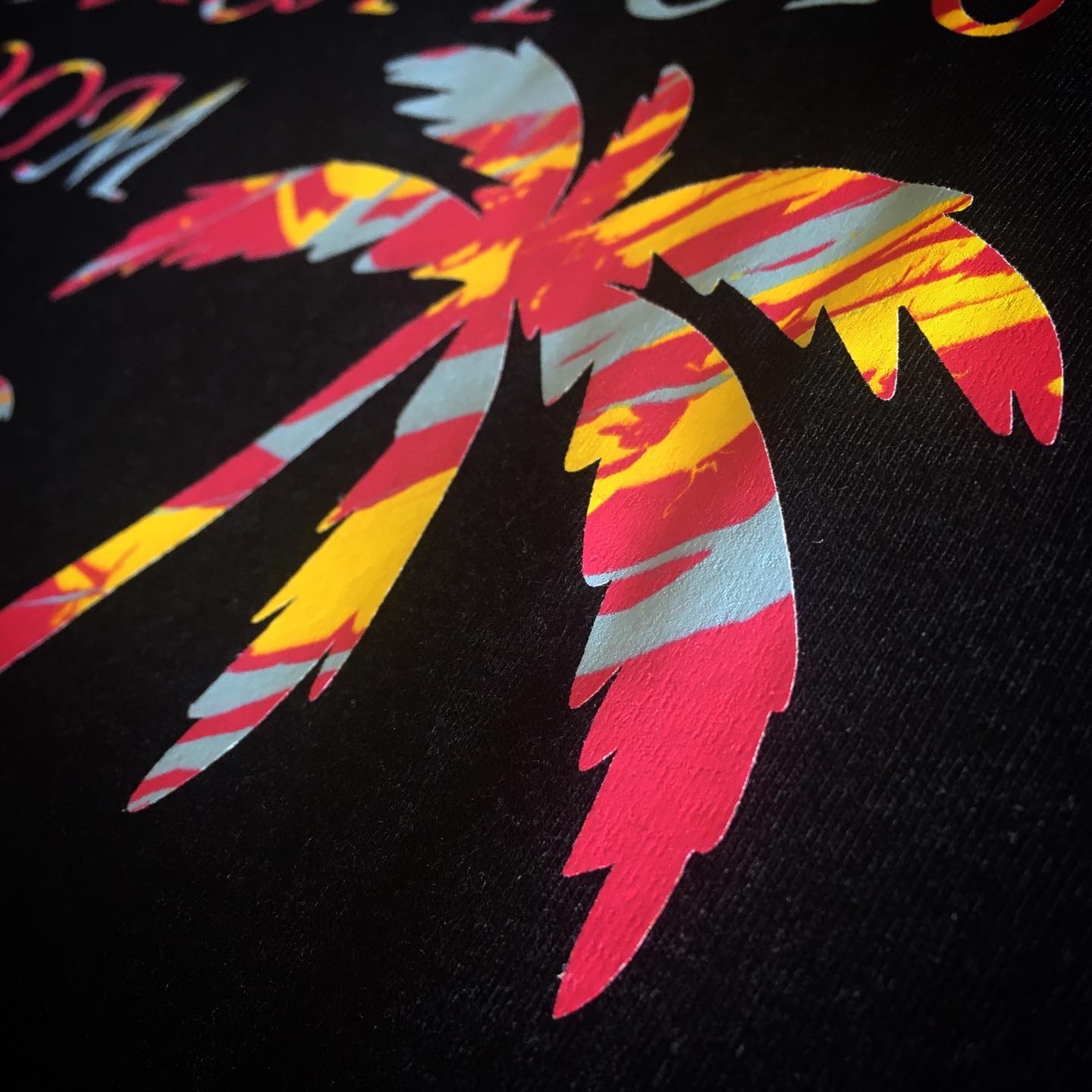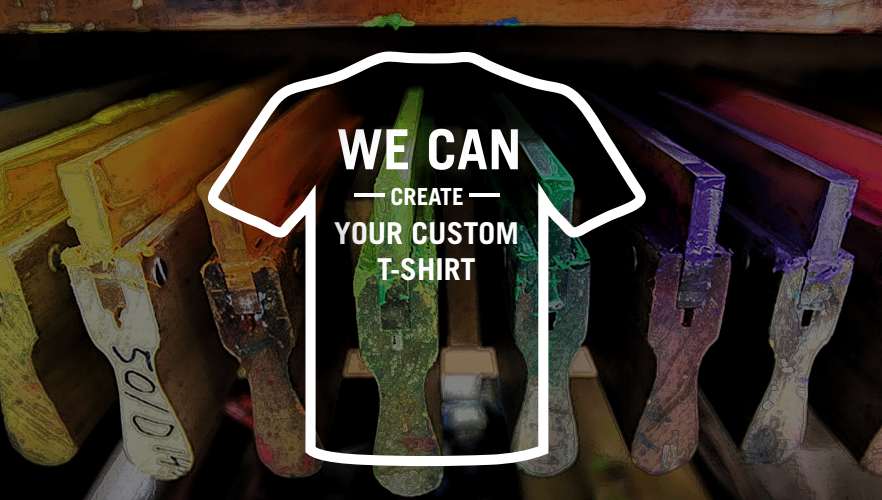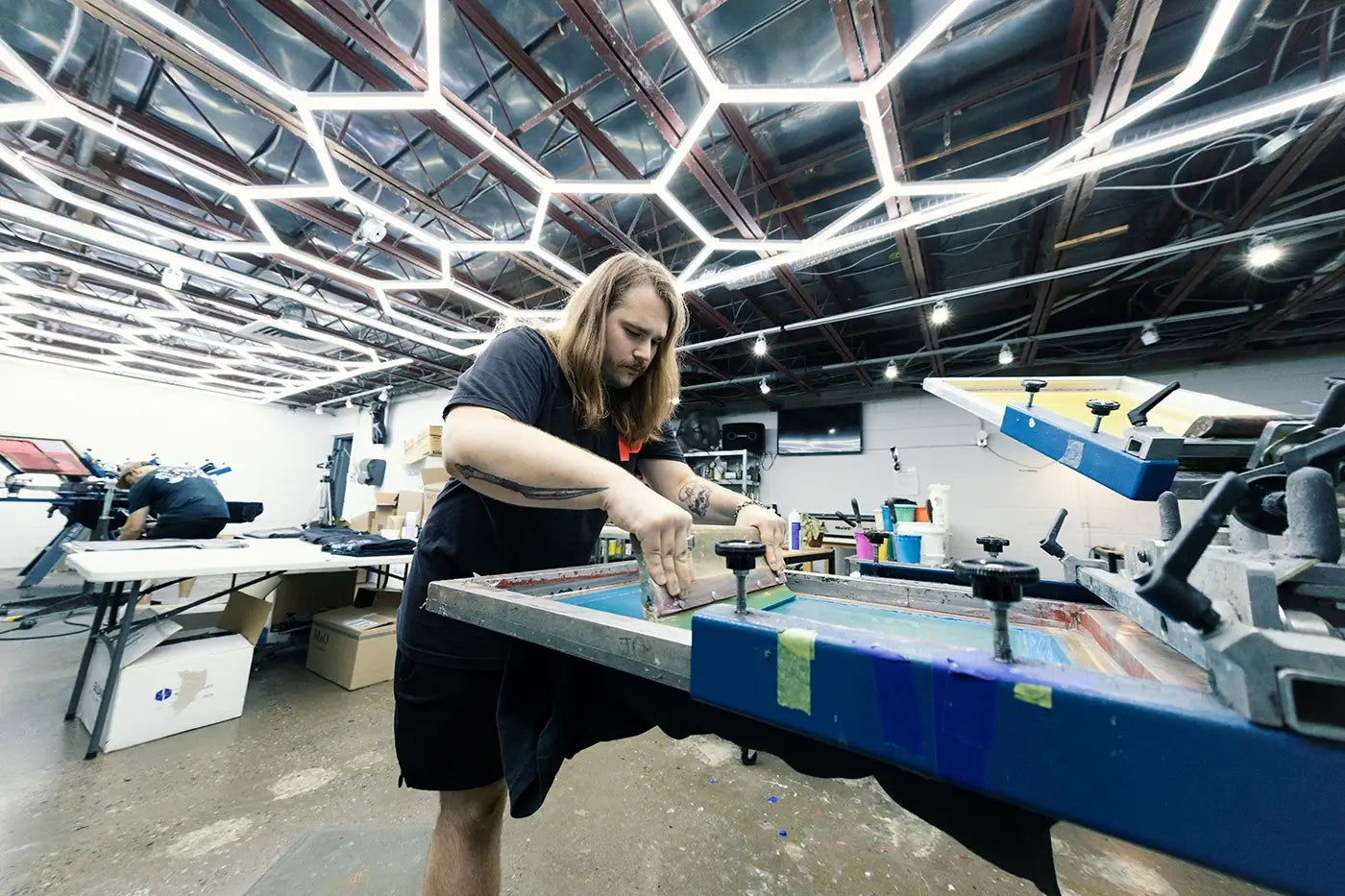Beginner-Friendly Screen Printing Kit for DIY Projects
Beginner-Friendly Screen Printing Kit for DIY Projects
Blog Article
Screen Printing Uncovered: Whatever You Required to Understand About T-Shirt and Garment Printing Methods
Display printing is a remarkable technique that integrates art with method, offering endless possibilities for imagination. Prepared to discover the crucial aspects that make screen printing an art kind?
The Fundamentals of Screen Printing: Exactly How It Works
When you dive into screen printing, you'll discover it's both a scientific research and an art. At its core, screen printing entails developing a stencil, or screen, that allows ink to travel through just in certain locations (screen printing kit). You start by picking your design and preparing your display with a light-sensitive solution. When you expose this solution to light, it hardens, leaving your layout as an adverse area.
Next, you'll mix your inks and prepare your printing surface. Placement the screen over the material, then make use of a squeegee to press ink through the screen onto the garment. This procedure needs precision, as you desire clear, dynamic prints. After printing, you'll heal the ink with heat, guaranteeing it abides by the textile and lasts through laundries. Each step is important, and understanding them will raise your display printing skills, changing simple garments into unique, meaningful items.
Kinds of Screen Printing Strategies
As soon as you comprehend the basics of screen printing, it's time to check out the different techniques that can elevate your styles. One preferred approach is standard display printing, where ink is pressed via a stenciled screen. This strategy is great for bold, dynamic colors. Then there's water-based ink printing, which provides a softer feeling and is eco-friendly, but it needs a different strategy to healing.
One more alternative is plastisol printing, understood for its toughness and vivid shades, making it a preferred for lots of brands. Experiment with halftone printing to create gradient results and elaborate designs.
Essential Devices for Display Printing
To accomplish sensational results in display printing, having the appropriate equipment is fundamental. You'll require a sturdy screen printing frame, which holds the mesh that transfers your design onto the garment. Next off, invest in top quality squeegees; these are important for applying ink uniformly across the screen.
Choosing the Right Inks and Products
When selecting inks and products for display printing, you need to think about the type of ink that works best for your task. Think of textile compatibility to ensure your styles look last and fantastic long. Discover environment-friendly ink options to make your printing process more lasting.
Types of Display Inks
Picking the right screen ink is important for attaining vibrant, durable prints that satisfy your task's demands. There are a number of types of screen inks to take a look at. Specialized inks, such as glow-in-the-dark or metal, can include distinct impacts to your styles.

Fabric Compatibility Considerations
Comprehending material compatibility is important for accomplishing high-grade display prints, specifically considering that different products respond distinctively to various inks. When choosing inks, consider the fabric type-- cotton, polyester, or blends. For cotton, water-based inks function well, using gentleness and breathability. Polyester, on the other hand, commonly needs plastisol inks for better attachment and vivid shades. If you're publishing on blends, you may need to make use of a mix of both kinds. Constantly evaluate your inks on example fabric to ensure they adhere correctly and maintain color stability. Furthermore, remember that material weight and structure can impact the last outcome, so selecting the appropriate ink and material combination is crucial for your job's success.
Eco-Friendly Ink Options
Eco-friendly inks are ending up being a popular selection for screen printers who wish to minimize their ecological impact while preserving high quality. When picking inks, think about water-based inks, which are less damaging and less complicated to clean up compared to typical solvents. These inks bond well with materials, providing vivid results without harmful chemicals. You may likewise discover eco-solvent inks that make use of fewer volatile organic substances (VOCs), making them a more secure alternative for both your health and the earth.
Furthermore, try to find inks made from eco-friendly resources, such as soy or vegetable-based options. By selecting the right inks and products, you'll not just develop magnificent layouts yet additionally contribute to a more sustainable printing procedure. Make the button, and your prints will show your dedication to the atmosphere!
Preparing Your Layout for Display Printing

Submit Format Requirements
To ensure your design looks sharp and vibrant on material, you'll require to pay attention to file style requirements for display printing. Beginning with vector files like AI or EPS, as they can be scaled without losing high quality. If you use raster photos, go with high-resolution data, such as TIFF or PNG, preferably at 300 DPI. Stay clear of utilizing JPEGs, as they Get More Info can shed clarity when resized. Make sure your style has a clear history to protect against unwanted white edges on your prints. Finally, maintain shade settings in mind; CMYK is conventional for display printing, so convert your RGB makes accordingly. By following these standards, you'll establish your artwork up for a successful print.
Color Separation Methods
Shade splitting up is an important step in preparing your design for display printing, and mastering it can substantially boost your print high quality. You'll require to break your design right into specific colors, as each shade requires a different screen throughout printing. This precision not only ensures precise shade representation however also improves the printing process.
Resolution and Size
Accomplishing the most effective cause display printing starts with guaranteeing your style has the right resolution and size. Preferably, your art work should go to least 300 DPI (dots per inch) for sharp, clear prints. Your last product might look amateur and pixelated. if you utilize lower resolution.
When it concerns dimension, take into consideration the measurements of your print area. Design your artwork to match the final print size, ideally producing it in the real measurements you'll be publishing. This method, you'll avoid any kind of unforeseen scaling problems.
Constantly additional hints examine your layout in both vector and raster layouts. Vector graphics can be scaled without losing high quality, making them perfect for display printing. Preparing appropriately will guarantee your style looks amazing on every garment!
Step-by-Step Display Printing Refine
Screen printing is a vibrant procedure that permits you to create dynamic styles on numerous surfaces. To get begun, you'll need a display, emulsion, and your selected ink.
Put ink onto the display and utilize a squeegee to push the ink through the pattern onto the material. Lift the display thoroughly and let the print completely dry. You've efficiently display published your design.
Tips for Successful Display Printing Projects
While you're diving into your screen printing tasks, bear in mind that preparation is key to success. Begin by collecting all your materials-- inks, garments, squeegees, and displays. A tidy work space assists protect against unwanted errors, so clean before you start.
Next, validate your artwork is high-resolution and effectively sized for your garment. Examine your display for correct direct exposure and clean it thoroughly to stay clear of smudges. When blending your inks, adhere to the maker's standards to achieve the appropriate consistency.
Throughout printing, apply also stress with your squeegee for regular results. Don't hurry; take your time to confirm each print satisfies your criteria. After printing, let your garments dry totally before managing or packaging them.
Last but not least, always keep a sample of your job for future referral. By doing this, you can evaluate your progression and improve your methods gradually. Pleased printing!

Often Asked Concerns
The length of time Does It Require To Set up a Display Printing Work?
Establishing a display printing task usually takes about 30 minutes to an hour. You'll prepare the displays, mix inks, and readjust the press. The time differs based on intricacy and experience, so remain arranged!
Can I Publish on Various Textile Types Using the Exact Same Strategy?
Yes, you can publish on various material kinds using the very same strategy, but you'll need to change your inks and setups. Some fabrics soak up ink differently, so exploring guarantees the very go best results for each and every product.
What Prevail Blunders to Prevent in Screen Printing?
When display printing, avoid usual errors like using the incorrect ink, disregarding proper exposure times, or skipping pre-press checks. Constantly evaluate your arrangement and preserve tidy displays to assure high quality results each time.
How Can I Appropriately Clean and Maintain My Screen Printing Equipment?
To correctly tidy and preserve your screen printing equipment, you ought to on a regular basis clean displays with appropriate solvents, inspect squeegees for wear, and ensure all devices are stored completely dry and dust-free. Uniformity prevents costly repairs and enhances performance.
Is Screen Printing Eco-friendly Compared to Various Other Techniques?
Screen printing can be more eco-friendly than various other approaches, particularly if you utilize water-based inks and eco-conscious products. By choosing lasting materials and techniques, you reduce waste and minimize your influence on the planet.
Display Printing Uncovered: Everything You Required to Know About T-Shirt and Garment Printing Strategies
At its core, display printing entails creating a stencil, or screen, that enables ink to pass with only in specific locations. Placement the display over the textile, then use a squeegee to push ink via the screen onto the garment. One preferred approach is standard screen printing, where ink is pushed via a stenciled display.When choosing inks and products for screen printing, you need to take into account the type of ink that functions best for your job.
Report this page